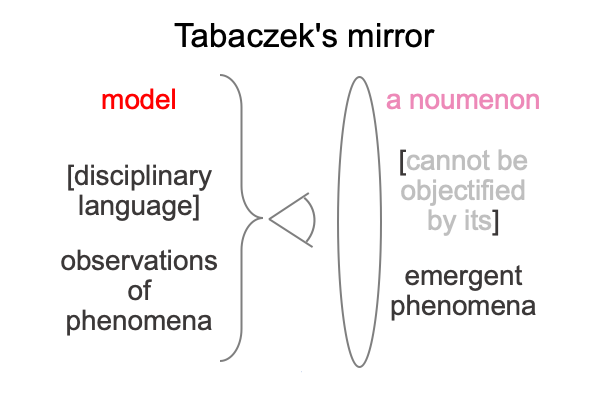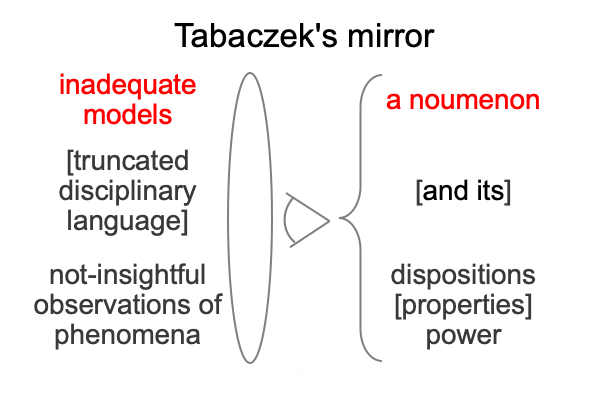0144 Part two of Tabaczek’s book builds a case for the noumenal side of the mirror.
Needless to say, I cover much of this territory during my account of the historical development of Tabaczek’s mirror.
0145 Chapter four presents six theories that associate to emergent phenomena in our world.
When a philosopher of science looks from the empirio-schematic side into Tabaczek’s mirror, the following describes what appears in the looking glass.

Yes, the focus is on emergent phenomena. The rest of the mirror is clouded by the ghost of the positivist intellect.
0146 Agents on the metaphysical side of the mirror are also not pleased.
In section 4.7, Tabaczek concludes that no current proposal recognizes that emergent phenomena are better described as dispositions [properties] powers, rather than the observable and measurable facets of… what? What is the thing itself in a world where one emergence is incorporated and taken for granted by another? When does the scientist realize that emergent phenomena coincide with the dispositions [properties] powers within a noumenon. Plus, the noumenon is an emergent being.

0147 In particular, inadequate models cannot substitute for the emergent being.
Disciplinary languages bound to truncated material and efficient causalities sneak in the characteristics of formal and final causation, under the table, so to speak. The contiguity between a noumenon and its dispositions [properties] powersincludes both whole and parts.
Dispositions [properties] powers of parts and whole are what give rise to emergent phenomena that can be observed and measured.
0148 Who do I blame?
The ghost of the positivist intellect?
